![]()
![]()
Linear Material
For linear behavior, the dielectric and magnetic material parameters determine the ratio of the electric field and flux density and of the magnetic field and flux density, respectively:
|
|
and |
|
. |
The material properties can be defined either as normal, describing isotropic media, or with consideration of anisotropic behavior. Please note that anisotropic behavior can be simulated only with hexahedral solvers.
Nonlinear Material
For magnetostatic and time-domain calculations, nonlinear materials can be defined by a function of the flux density B over the magnetic field H.
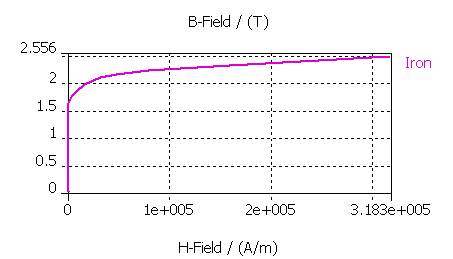
This yields to a curve describing the permeability over the magnetic field strength.
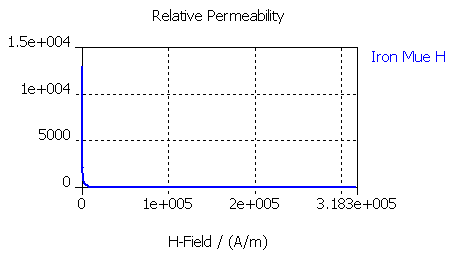
Nonlinear Electric Conductivity
Similarly to the aforementioned nonlinear magnetic
permeability, also the nonlinear electric conductivity ![]() can be defined for the tetrahedral-based
stationary currents solver. This characteristic can be defined by
a function of the electric field E
over the current density J:
can be defined for the tetrahedral-based
stationary currents solver. This characteristic can be defined by
a function of the electric field E
over the current density J:
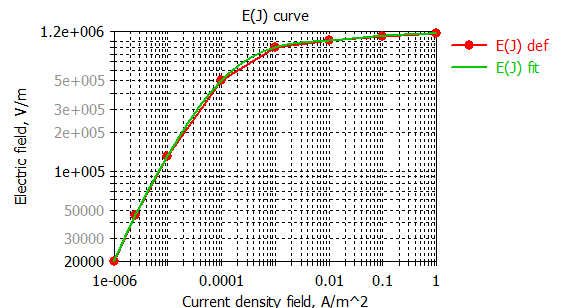
This yields to a curve describing the electric conductivity over the electric field strength:
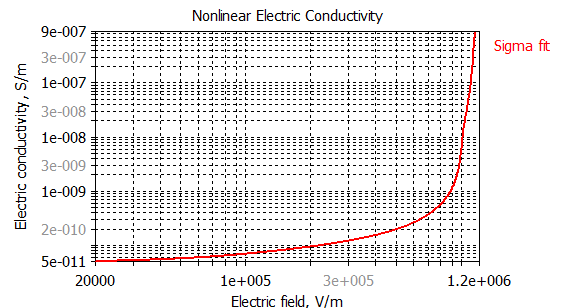
The nonlinear electric conductivity can be defined by setting the material type to normal and switching to the Conductivity tab of the Material Parameters dialog.
Temperature Dependent Materials
Another material type supported by the tetrahedral-based stationary currents solver is the temperature dependent material, whose electric conductivity can depend on an externally computed temperature distribution. The following plot demonstrates the temperature dependency of electric conductivity of copper:
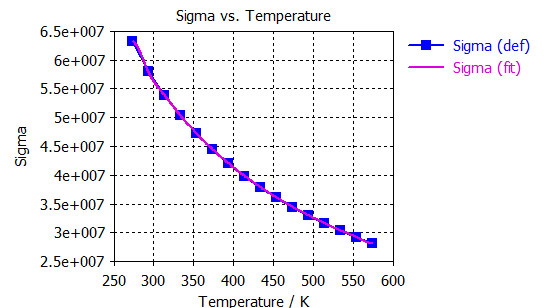
The temperature distribution may be computed by the stationary thermal solver and imported using the Field Import dialog.
Weight density
Besides the mentioned electric and magnetic material properties also the density value can be defined.
See also
Modeler View, Material Parameters, Material Parameters: default - General